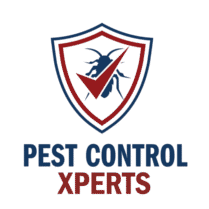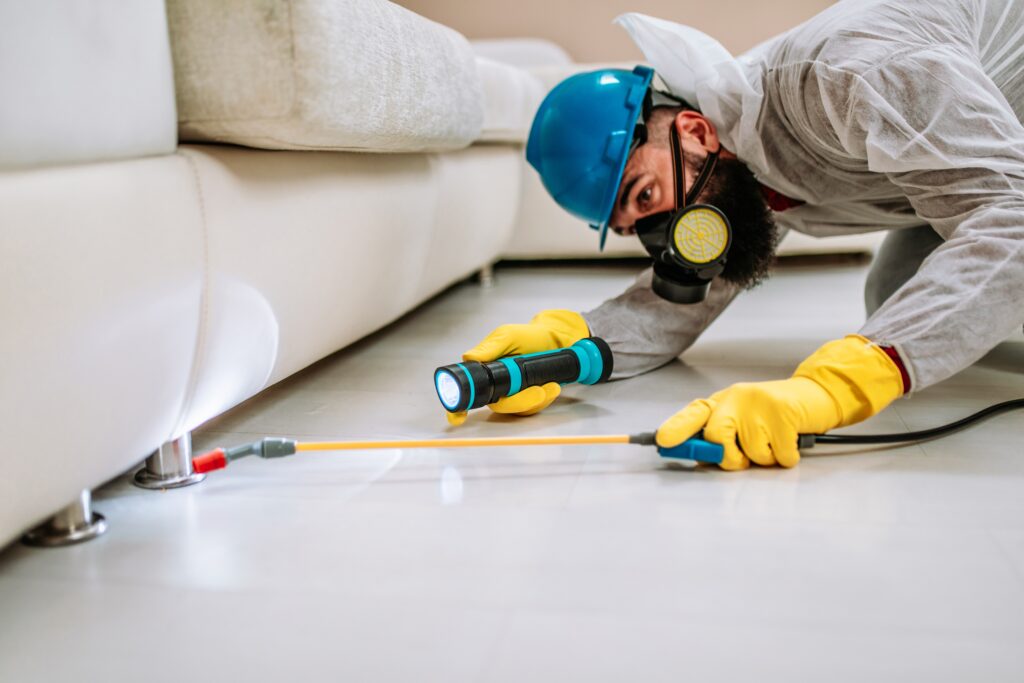Can’t Wait? Need To Speak With A Pest Pro Immediately?
Call Alhambra Pest Control Xperts And Speak With Someone Immediately!
Alhambra, Pest Control Experts: Premier Pest Control Alhambra CA and Termite Treatment for Properties
Welcome to Alhambra, Pest Control Experts, your local authority for pest control in Alhambra, CA. When you discover an unwanted guest in your home or business, it is a deeply unsettling experience. In the diverse, vibrant community of Alhambra, pest management is not a one-size-fits-all problem; it requires a specialist who understands the unique ecology of the San Gabriel Valley. Our mission is to restore the peace of mind you deserve by providing expert, discreet, and effective pest control solutions.
For years, we have specialized in protecting Alhambra homes and commercial properties from the most persistent local invaders. Whether you need proactive pest prevention, emergency pest control, or complex termite treatment, we stand ready to resolve your pest problem with unparalleled expertise. When you search for an Alhambra exterminator, you are looking for a definitive solution, and that is precisely what we deliver.
Why Professional Pest Control is a Necessity in Alhambra, California
Pests thrive where people live, and the specific environment of Alhambra, CA, creates a perfect storm for a variety of common, destructive insects and rodents. Dealing with an infestation here demands more than standard bug extermination products from a hardware store. It requires deep, hyper-local knowledge.
Geography and Climate: Breeding Grounds for Pests
Alhambra sits within the San Gabriel Valley, a region defined by its Mediterranean climate: long, hot, dry summers and shorter, mild, and often wetter winters. This climate is a critical factor influencing pest behavior:
- Extended Pest Seasons: The extended warm season allows pests like mosquitoes, ants, and spiders to reproduce and thrive for more of the year compared to other regions. This leads to a higher demand for seasonal pest control and ongoing protection.
- The San Gabriel River Influence: Our proximity to the San Gabriel River wash and its associated moisture creates prime conditions for subterranean termites to build massive colonies and for mosquito control issues to flare up, especially after seasonal rains. Water-loving pests such as certain types of cockroaches also seek refuge in structures as local dry areas fluctuate.
- Rodent Behavior: As the weather shifts toward winter, even in Southern California, rodents aggressively seek warmth, food, and shelter indoors, leading to increased rodent control and rat control needs. Properties throughout Alhambra need proactive rodent proofing to block entry points before the cooler months arrive.
Landmarks, Architecture, and Urban Factors
The character of Alhambra’s neighborhoods and commercial zones presents unique pest challenges:
- Historic Architecture & Termites: Neighborhoods with older, established structures near the Alhambra Historical Society or the Civic Center often face challenges from drywood termites, which require specialized termite inspection and treatment plans. These older properties provide years of untouched wood for wood-destroying insects to colonize.
- Main Street and Commercial Density: The high-traffic commercial and restaurant zones along Main Street are constantly battling German cockroaches and other roach extermination issues due to the steady availability of food sources and complex sanitation issues in commercial settings. Furthermore, hospitality areas may see spikes in bed bug bites and subsequent bed bug infestations.
- New Construction and Displaced Pests: Ongoing development, particularly near the expanding suburban edges, leads to habitat disruption. As land is cleared, established rodent colonies and large ant colonies are displaced, driving them directly into existing residential pest control properties seeking immediate shelter. This urban factor makes preventative pest inspection essential.
Our Comprehensive Pest Solutions for Alhambra Homes and Businesses
At Alhambra, Pest Control Experts, we offer targeted pest management Alhambra solutions for every major local pest. We understand the specific biology of each invader and deploy proven strategies for rapid and lasting eradication.
Termite Control: Protecting Your Alhambra Investment
Termites are a devastating reality in Southern California. The damp soil near the river wash contributes to subterranean termites, while older homes provide ample food for drywood termites. We are the leading provider of termite treatment Alhambra residents trust.
- The Threat: Termite damage is often hidden, progressing for years before signs are noticeable. These wood-destroying insects compromise the structural integrity of your property.
- Signs of Infestation: Piles of drywood termite droppings (frass), mud tubes on foundations (subterranean termites), and swarms of flying reproductive termites are clear signs. A professional termite inspection is the only definitive way to assess the threat.
- Our Solution: We deploy advanced treatments, including targeted spot treatments, full-structure fumigation when necessary, and soil treatments to create long-term barriers against subterranean termite colony activity.
- How to get rid of termites in your home quickly? The fastest way is to immediately contact specialists who can perform an emergency pest control inspection. Depending on the species and severity, a professional treatment is the only effective solution to rapidly halt the destruction.
Rodent Control: Securing Your Home from Mice and Rats
Rodent infestations are a year-round problem in Alhambra, with rats and mice seeking refuge, particularly in attics, garages, and crawlspaces. Effective rodent control Alhambra service is essential for health and property preservation.
- The Threat: Rodents chew through wiring, insulation, and pipework. Their droppings and urine spread disease and contaminate food preparation areas.
- Signs of Infestation: Finding droppings, hearing scratching sounds in the walls, seeing grease marks (rub marks) along baseboards, and noticing torn-up materials used for nesting are all indicators.
- Our Solution: Our rat control and mice extermination program focuses on safe, strategic placement of control measures, followed by intensive rodent proofing to seal all potential entry points. We remove the source of the infestation and prevent re-entry.
- Tips for preventing rodent infestations in winter? Proactive pest proofing is the number one defense. Seal up any gap larger than a dime (for mice) or a quarter (for rats) on your foundation, roofline, and utility entry points. Clear clutter from attics and garages to eliminate nesting materials.
Ant Control: Stopping the Invasion
Ants are the most common household invader in Alhambra, with species like Argentine ants forming massive, complex colonies. They are relentless in their search for food and water.
- The Threat: While mostly a nuisance, some species can bite or cause sanitation issues by trailing across food surfaces. Carpenter ants, though less common, can cause significant wood damage similar to termite damage.
- Signs of Infestation: Seeing trails of foraging ants, particularly in kitchens and bathrooms, or finding small piles of dirt or wood shavings (in the case of carpenter ants).
- Our Solution: Our ant control Alhambra strategy goes beyond simple surface sprays. We utilize non-repellent barrier treatments and targeted baiting systems that the worker ants carry back to the main colony, providing effective, long-term colony elimination.
Mosquito Control: Reclaiming Your Backyard
The warmth and occasional standing water in the San Gabriel Valley make professional mosquito treatment a necessity for enjoying your outdoor property.
- The Threat: Mosquitoes are a nuisance that prevent comfortable use of your outdoor space, and they are responsible for transmitting various pathogens.
- Signs of Infestation: Excessive adult mosquito activity at dawn or dusk, or finding standing water sources with “wigglers” (larvae).
- Our Solution: We focus on source reduction, identifying and treating standing water sources with larvicides, combined with targeted barrier treatments of resting areas (bushes, decks) to significantly reduce the adult mosquito population. This is ideal for professional mosquito treatment for backyard parties and ongoing protection.
Cockroach Extermination: Eradicating Unsanitary Pests
Cockroach infestation is a sign of a deep-rooted issue, especially with highly reproductive species like German cockroaches that thrive in the dense environments of the city.
- The Threat: Roaches spread bacteria and allergens, posing serious health risks. Their presence indicates sanitation issues that must be addressed professionally.
- Signs of Infestation: Seeing cockroaches during the day (a sign of a massive infestation), finding roach droppings that resemble pepper or coffee grounds, or detecting an unusual, oily odor.
- What are the first signs of a roach infestation? The absolute first signs are often droppings in drawers or cupboards, tiny brown egg cases (oothecae) in hidden cracks, or a faint, musty smell. Seeing a roach means many more are hiding.
- Our Solution: We deploy advanced roach extermination techniques, including deep baiting, insect growth regulators, and targeted treatments that penetrate deep into the voids and harborages where American cockroaches and German cockroaches breed.
Bed Bug Extermination: A Sensitive, Rapid Response
Bed bugs are easily transported into Alhambra via travel, second-hand furniture, or dense community living. They require specialized bed bug treatment.
- The Threat: Bed bug bites can cause significant discomfort and stress. A bed bug infestation can escalate quickly, spreading from the mattress infestation to furniture and walls.
- Signs of Infestation: Waking up with small, itchy red bites, finding tiny blood smears or rusty-colored droppings on sheets, or locating the bugs themselves in mattress seams, behind headboards, or in electrical outlets.
- Our Solution: We provide discreet, thorough bed bug extermination. Our treatment protocols often utilize heat treatment, which is highly effective and reaches pests in all life stages. We do not use “chemicals” as a broad term, but highly-specific, targeted material applications designed for maximum effectiveness.
- Best way to exterminate bed bugs without chemicals? The most effective non-material application approach is professional heat treatment. It raises the temperature of the structure high enough to eliminate the entire infestation, including eggs, often in a single day.
Spider and Wasp Control: Managing Perimeter Threats
Spiders, including medically significant species, and stinging insects like wasps, often build nests around Alhambra homes.
- The Threat: Spiders, while beneficial for eating other insects, can pose a threat when they are venomous. Wasps and hornets defend their nests aggressively, creating a hazard.
- Signs of Infestation: Excessive spider webs on eaves and window frames, or the presence of a paper or mud nest structure under eaves or in trees.
- Our Solution: We provide comprehensive spider removal and wasp control by treating nesting sites and creating a defensive perimeter barrier for residential pest control properties.
- What to do if you find a wasp nest? Do not attempt to treat or remove it yourself. Wasps become highly aggressive when disturbed. Clear the area and immediately call an experienced bug extermination team to handle the removal safely.
Our Method: An Integrated Approach to Pest Management
Our philosophy is rooted in Integrated Pest Management (IPM), a sophisticated and strategic approach to pest control. This is not simply about applying products; it is about building a customized, long-term pest prevention solution for your specific property. IPM is a commonsense approach that emphasizes minimal risk to people and pets while delivering maximum effectiveness against pests.
Step 1: Thorough Pest Inspection
The foundation of our successful pest management Alhambra service is a detailed inspection. Our experts look for more than just the visible pest. We search for the hidden conditions, the access points, and the sources that enable the infestation. This pest inspection is critical for understanding the scope of the problem.
Step 2: Customized Treatment Plan
Based on our findings, we develop a specialized strategy. Your plan addresses the specific species, the severity of the infestation, and the unique architecture of your Alhambra home or commercial property. This customized approach ensures we use the most effective methods to achieve swift pest eradication.
Step 3: Effective Pest Eradication
We apply targeted treatments using advanced methodologies. This includes structural treatments for termite colony elimination, baiting systems for ant control, and advanced heat treatments for bed bugs. Our goal is to eliminate the current infestation rapidly and thoroughly.
Step 4: Proactive Pest Proofing & Prevention
True success lies in prevention. We focus heavily on pest proofing your property by advising on or performing sealing of entry points, modifying habitats, and removing conditions that attract pests. This proactive approach ensures your property stays protected long after the initial service, reducing the need for emergency pest control.
Proudly Serving All of Alhambra and the Surrounding Area
As a local Alhambra business, we are invested in the health and safety of our entire community. We provide residential pest control and commercial pest services across all neighborhoods, bringing our expertise right to your doorstep, whether you are near the bustling commercial corridor or a quiet residential street.
- Midway Manor
- Story Park Area
- Alhambra Park District
- Downtown Alhambra
- The northern Foothill neighborhoods
- Areas near Monterey Park and San Gabriel
- The industrial and commercial zones near Valley Boulevard
Our commitment to hyper-local service ensures we are familiar with the specific challenges presented by every block and building in the area. When you need a local Alhambra exterminator who understands your neighborhood, we are the clear choice.
Resolve Your Pest Problem Today with Alhambra, Pest Control Experts
A pest problem can feel overwhelming. The anxiety of seeing rodent droppings or discovering termite damage is understandable, but you do not have to face it alone. Alhambra, Pest Control Experts provides the expertise and decisive action you need to take back your property. We are the trusted partner for comprehensive bug extermination, rodent control, and total property protection in Alhambra, CA. Our team is ready to deploy an environmentally friendly pest control solution built around the proven principles of Integrated Pest Management (IPM) to deliver lasting relief. Do not let pests compromise your comfort or your investment a minute longer. Call us today to resolve your pest problem.
Alhambra Service Area Zip Codes: 91801, 91802, 91803





